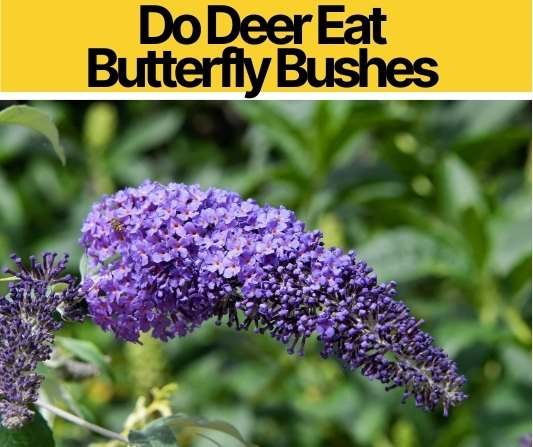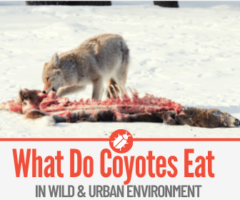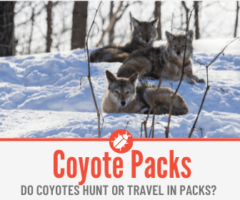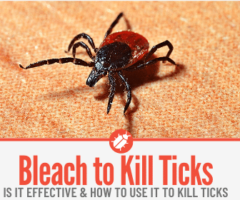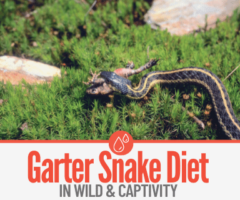 It is incredibly common nowadays to spot deer and fawn around. This is due to the overpopulation of deer, but also because humans have expanded far into wild animal territory.
It is incredibly common nowadays to spot deer and fawn around. This is due to the overpopulation of deer, but also because humans have expanded far into wild animal territory.
We have taken more and more space, which increases the chances of discovering wildlife in odd spaces.
So, whether you are rescuing an orphaned fawn, or you hold a permit to raise wildlife, let’s walk through the ins and outs of feeding baby deer and taking care of them.
What Do You Feed A Baby Deer?
This heavily depends on the fawns age.
Baby deer Fawns under the age of 12 weeks need to be fed deer milk, goats’ milk, or adequate milk replacer.
WARNING: Never feed Fawns cows’ milk. It will cause massive gastrointestinal stress; it is not healthy or safe for wildlife to consume.
A Milk replacer is the best option.
Forage and grain such as legume hay or high-quality alfalfa hay should be introduced when the fawn is about 12 weeks old.
This is because deer are ruminants and have a 4-part stomach that is made to hold and digest large quantities of food and forage.
Not only are alfalfa and legume hay great for digestion, introducing fawn to some deer starter feed as well as forage will help start their rumen development (the largest of the 4-part stomach and the main digestive centre).
After baby deer pass the 12 week mark, you can start reducing the milk or milk replacer and up the deer starter, pelleted feed, and forage such as grass and leaves. Don’t forget water!
Older baby deer can also Eat Fruits and Vegetables such as: Carrots,Cabbage,Apples,Bananas,Pears, Berries and Small amounts of Lettuce.
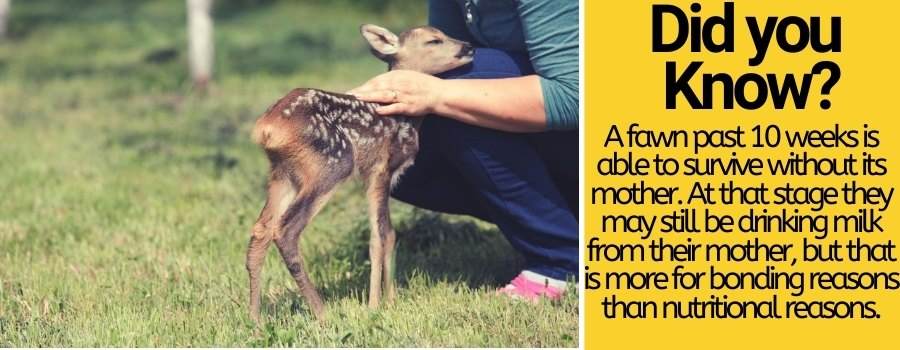
What do Baby Deer Eat in the Wild?
In wild baby deer fawns will mainly drink Mother’s milk till they are around 12 weeks old.
Once they are around 4-5 weeks old, they will already start trying out grass – This is mainly to help them transition from eating milk to solid plant matter.
As they are around 6-8weeks old in the wild they will start trying out and eating small amounts of Leaves, small soft branches, seeds and different fruits/berries they may come across.
Feeding An Orphaned Baby Fawn
The notion of ‘orphaned’ or ‘abandoned’ fawns are a hot topic amongst wildlife rescue centres and before we continue, it is important to understand under what circumstances a fawn would be considered ‘orphaned’.
Fawns are almost never abandoned. Doe leave their fawn behind to forage for food, often at night, and return to them in the day. Mothers can be gone for hours and are most often close by.
The fawns are instructed to stay still and not move to protect themselves from predators. There are many cases of people finding fawns alone, the doe nowhere in sight.
But understand that 90% of the time they are not abandoned.
The mother may have run off to safety upon catching your scent, or she’s simply out on a forage.
If you truly feel this fawn’s life is in danger, call a wildlife rescue centre or hotline for advice before doing anything.
Alright, that was the mandatory PSA, now back to the question. Once you have indeed been instructed to care for an orphaned baby fawn, the next step is to hydrate them with an electrolyte replacer, as an emergency alternative, sugar water.
Then goats’ milk or an adequate milk replacer will be necessary as it will be their main source of nutrition.
What Milk Do You Feed A Baby Deer & Baby Deer Milk Replacer
As mentioned before, goats’ milk is a great and easily accessible milk to feed fawn. Again, do not under any circumstances feed fawn cow’s milk. It is not made for their digestive system; it will only damage it.
Milk replacers are even better as depending on your location goat milk may not be as easy accessible, just make sure to select one with at least 24% protein.
It is important that the fawn receives all the essential vitamins, nutrient, carbs, and fat needed for proper development.
How Long Can Baby Deer Go Without Milk?
They cannot. Baby deer are to be fed up to 8 times a day. Not feeding them or feeding them incorrectly will cause dehydration and probably death.
Caring for a fawn is a round-the-clock job, and fawn are usually only weaned from milk at about 10 weeks.
Do Baby Deer Drink Water?
They absolutely do. Water is a power source for all living things, especially fawns as they can dehydrate quickly. Water is life, give them water!
How To Take Care of A Baby Deer & Feed him
You will need a goat/lamb feeding nipple (these can be put over regular water bottles) and the drink of choice (milk, milk replacer, electrolyte substitute). Make sure the drink is warmed up to body temperature.
You can start by dribbling some liquid onto the deer’s lips. This will encourage it to trust you and will kickstart the urge to feed.
Make sure to hold the bottle up high so that the fawn must extend up to feed. It may look awkward, but this is its natural feed position and we want to preserve natural instincts as much as possible.
The final step may be a bit uncomfortable but is necessary if you want to properly take care of a baby deer.
If the fawn is having trouble passing bowel movements or urinating during or after feeding, it is your job to simulate the area and take care of him.
With gloves on, use a clean towel to gently rub their anus and genitals to encourage urination/defecation.
When Baby Deer are past 12weeks Old they will require much less care.
Feeding A New-born Abandoned Fawn?
New-born fawns naturally begin feeding within the first few hours of being born.
If you have a new-born fawn whose mother has rejected it or is deceased, it is important to feed it within the first 4 hours.
It is recommended to feed them with colostrum supplement. During this time the fawns body is in prime condition to absorb all the nutrient critical to its health, growth, and survival.
It needs to be continuously fed this supplement every 3 or 4 hours in the first two days.
How Much Do You Feed A Baby Deer?
Fawns are hungry little things. They need to be fed between 6-8 times a day, spread out every 3-4 hours , they need to be given as much milk as they like.
Raising Baby Deer Fawn – Is It Possible?
There is so much controversy about this and of course it depends on the circumstances. I will start by saying that deer belong in the wild.
They are programmed to be afraid of humans, it keeps them safe. Humans should absolutely only interfere when they are certain that a fawn’s mother is dead.
Even if a fawn is in the middle of a road, for example, it can be moved to the side and left there for the mother to return, because she will return.
Always consult a wildlife centre for advice. In the circumstance of a fawn needing rescuing, it is important to handle it as little as possible.
Firstly, because they are not dogs. Petting them, stroking them is not comforting to them, and that stress and fear can be damaging to their health.
Additionally, fawns imprint quickly, become attached quickly. And with rescued fawns, the goal is always to release them back into the wild.
But in order for them to survive in the wild, they need to not be attached to humans.
Rescuers and people with permits to raise wildlife know this and ensure that fawns are interacted with as little as possible. They are fed in groups so that they do not imprint or bond with humans during feeding.
The focus is on giving them proper care and nutrition so that they can lead normal and healthy lives.
It is indeed possible to raise a baby deer fawn but it also incredibly complicated. They require a lot of attention and caring for.
8 feedings a day for at least 10 weeks, introduction to new foods to stimulate their digestive systems, encouraging them to forage on their own and interact solely with other deer.
You simultaneously spend a lot of time with the fawn but do not want it to bond with you.
Its tiring, time consuming, and ultimately complicated. But if you are a permit holder, and you have the capacity, time, and knowledge to care for these incredible creatures, I truly commend you 🙂
Can A Baby Deer Survive Without Its Mother?
This topic is also of much discussion, especially when talking about deer hunting. Generally, a fawn past 10 weeks is able to survive without its mother.
At that stage they may still be drinking milk from their mother, but that is more for bonding reasons than nutritional reasons. At this stage they should be able to survive without their mother.
How long Do Fawns Stay with Mother in Wild?
Fawns are weaned till around 10-12 weeks , till this age mother deer will usually also eat the baby deer’s droppings to keep stealth to predators lurking around.
Mother Deer will take care of Young male Bucks which will stay with her till they are around 1year old.
Once young Bucks are around 1year old the mother Deer will force them to leave to prevent inbreeding.
Female Fawns can stay for as long as 2 years near their mother.
Will a mother deer leave her fawn if a human touches it?
This is absolutely a possibility. Fawns are scentless, which usually protects them from other predators.
And as deer a programmed to fear the human scent, if that scent is transferred to the fawn, the mother can and will abandon it.
At the end of the day I think the lesson here is to leave wildlife alone. Nature is a perfect system. And while we think we’re helping a scared and abandoned little fawn, that usually is not the case.
There are a set of golden rules to follow when spotting a baby deer all by its lonesome.
- Do not touch it. Unless it is in the middle of a road or somewhere dangerous.
- Walk away and do it quietly. The mother is almost always close by and you do not want to chase it away.
- Call the people who are trained to handle this.
Let’s keep our wildlife safe and beautiful!

